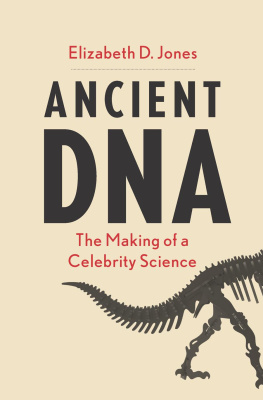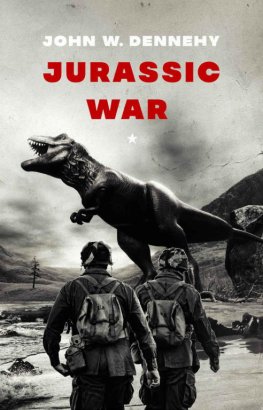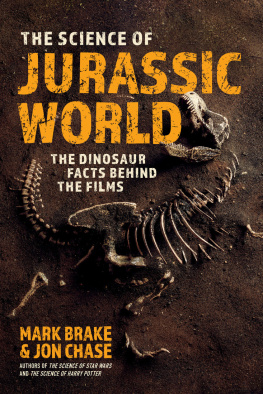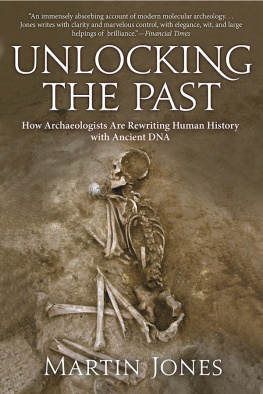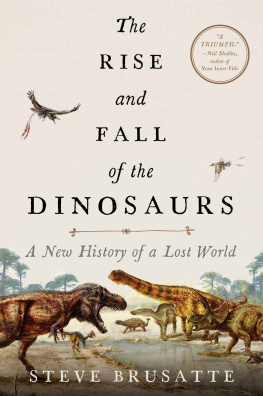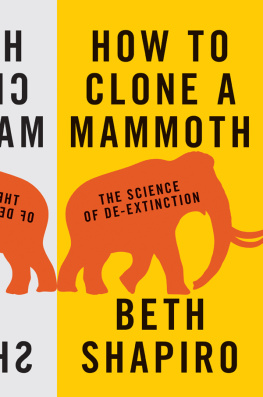ANCIENT DNA

Published with assistance from the Mary Cady Tew Memorial Fund.
Copyright 2022 by Elizabeth D. Jones. All rights reserved. This book may not be reproduced, in whole or in part, including illustrations, in any form (beyond that copying permitted by Sections 107 and 108 of the U.S. Copyright Law and except by reviewers for the public press), without written permission from the publishers.
Yale University Press books may be purchased in quantity for educational, business, or promotional use. For information, please e-mail (U.K. office).
Set in Scala type by IDS Infotech, Ltd.
Printed in the United States of America.
ISBN 978-0-300-24012-2 (hardcover : alk. paper)
Library of Congress Control Number: 2021939551
A catalogue record for this book is available from the British Library.
This paper meets the requirements of ANSI/NISO Z39.48-1992 (Permanence of Paper).
10 9 8 7 6 5 4 3 2 1
For
Patrick,
Dawson,
and Colton
CONTENTS
PREFACE
My interest in paleontology, and in particular the search for DNA from ancient and extinct organisms, began over a decade ago as an undergraduate majoring in history and philosophy at North Carolina State University. As part of my studies, I was required to take a science elective. I chose the course Dinosaurian World because, like many other students, I thought it would be a walk in the park. Dr. Mary Schweitzer taught the course, which was anything but easy. I loved it, though. I spent the next several years digging up dinosaurs in the badlands of Montana, prepping fossils in the lab, and taking a number of other classes on dinosaur anatomy, physiology, and evolution.
After class one day, I asked Dr. Schweitzer a question. I had seen on television that one of the major science channels was airing an upcoming episode on a scientist who had discovered evidence of ancient proteins from a dinosaur. I was planning on watching it but I wanted to know if she knew of this work, and if so, what she thought of it. Ancient dinosaur proteins? Really? She smiled and said to watch it first and that we could talk about it later. So, I did and was mortified when I realized that Dr. Schweitzer was the star of the show, the scientist suggesting she had extracted evidence of ancient proteins from a 60-million-year-old Tyrannosaurus rex.
Dr. Schweitzers findings, published across top-tier academic journals from Science to Nature, were nothing short of extraordinary. As such, they were quickly and frequently followed by media attention and public speculation. As I learned more about this work, I learned that she was criticized just as much, if not more, than she was celebrated for these pioneering efforts in molecular paleontology. Since the early 1990s, she had been investigating the limits of molecular preservation in fossils as a student studying with Jack Horner, a maverick dinosaur paleontologist and scientific consultant on Steven Spielbergs cinematic production of Michael Crichtons Jurassic Park. Over the years, she had acquired loyal supporters as well as vehement skeptics who resisted the idea that molecules, whether proteins or DNA, could survive intact for millions of years.
My exposure to this paleontological controversy, and the very public nature of it, is what inspired this book. Consequently, the book is a historical examination of the search for molecules from fossils, specifically the search for DNA from fossils, as it progressed from an idea of science fiction into a research reality from the early 1980s to today. In these pages, I explore the controversy and celebrity that not only followed it but actually came to direct and define, in quite remarkable ways, the formation of a new scientific field, now widely known by both the scientific community and broader public as the field of ancient DNA research.
ACKNOWLEDGMENTS
There are many who have inspired and mentored me. First, I thank my paleontology professors, Mary Schweitzer at North Carolina State University and Gregory Erickson at Florida State University, who encouraged me to pursue paleontology and its intersections with the science of genetics. I also acknowledge Will Kimler, North Carolina State University, and Paul Brinkman, North Carolina Museum of Natural Sciences, who introduced me to the history of science, and Sam Schmidt, who keeps me updated on the latest fossil discoveries. I am especially grateful to the History and Philosophy of Science Program at Florida State University and Fritz Davis, who advised my masters research, which became the foundation for this book.
Next, the extensiveness of this research was made possible with funding from University College London (UCL) through three separate scholarships: a UCL Graduate Research Scholarship, a UCL Overseas Research Scholarship, and a UCL Cross-Disciplinary Training Scholarship. I am also grateful to UCLs Department of Science and Technology Studies, the British Society for the History of Science, the History of Science Society, and the Division of Paleontology at the American Museum of Natural History for funding toward research travel to conduct interviews and deliver presentations.
I also want to acknowledge the paleontologists and geneticists in UCLS Department of Genetics, Evolution and Environment who have greatly informed and critiqued this research as it was developed. A special thanks goes to Marcela Randau Carvalho Burgess, Andrew Cuff, Thomas Halliday, Ryan Felice, Aki Watanabe, and Carla Bardua of Anjali Goswamis Lab. Thanks also go to Mark Thomas and the Molecular and Cultural Evolution Lab, especially Zuzana Faltyskova, Anna Rudzinski, Elizabeth Gallagher, Katherine Brown, Catherine Walker, Pascale Gerbault, Lucy van Dorp, Yoan Diekmann, Adrian Timpson, Stuart Peters, and David Diez del Molino. I am further appreciative for the opportunity to work with Selina Brace, Ian Barnes, and Tom Booth from the Natural History Museum as part of the UCL Cross-Disciplinary Scholarship Training.
From UCLs Department of Science and Technology Studies, I am thankful for the support from staff, faculty, and colleagues. Specifically, Raquel Velho, Erman Sozudogru, Oliver Marsh, Toby Friend, and Julia Sanchez-Dorado have offered valuable insights and encouragement. Further, I want to acknowledge Joe Cain, my doctoral supervisor, whose intellectual guidance was central to the development of the argument presented here.
Overall, the strength of this book rests in the fact that it was produced in partnership with scientists, especially those who helped found and further the field of ancient DNA research. I am indebted to each interviewee for giving so much of his or her time to the telling and writing of this history. A number have shared or donated documents from their research, helping me to create an archive for the future. These interviewees and their memories are priceless. I hope they see their experiences in these pages.
This book was acquired for Yale University Press by Jean Thomson Black, and I am beyond grateful for her vision and patience, and the opportunity to publish with a great team. Michael Deneen, Elizabeth Sylvia, Philip King, and Margaret Hogan have expertly guided this manuscript through the editorial process. Further, this manuscript has been much improved thanks to comments from David Sepkoski, and several anonymous reviewers.
Finally, my career as a historian of science has been possible because of my family, both the Dobsons and the Joneses, and in particular my parents, Allen and Martha, who have supported this research through its many stages. Most of all, I want to acknowledge my best friend and husband, Patrick. The path to achieving our accomplishments is never a linear or solitary journey, and I have him to thank for helping to bring this book into the world.
Next page
